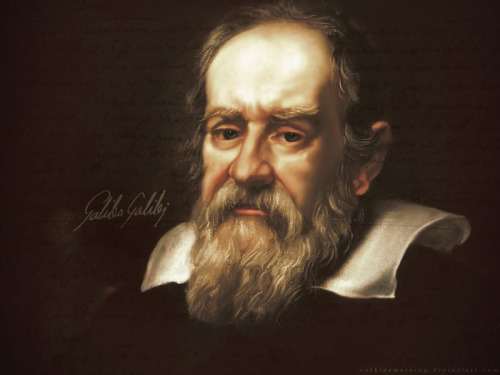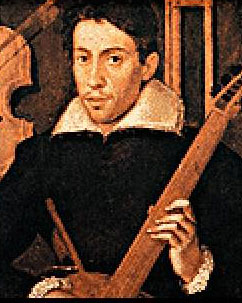Rationalism and Early Opera (c.1600 – c.1700)
Once
again, to be able to understand the "progress" of music we need to
take a larger view of what was going on at that specifically period of time.
The
baroque period was an age of discovery by scientists such as Galileo and
Newton, of religious conflict between Catholics and Protestants, and of
political absolutism. Each of these factors was reflect4d in musical life. the
experiment of monody led tot he creation of dramatic music, the religious
hostility found music serving the purpose of proselytism, an the concentration
of power and wealth in the hands of educated nobles stimulated music patronage.
Some, like Count Giovanni de`Bardi of the Florentine Camerata.
The
Florentine Camerata were an important group of musical amateurs who met to
discuss literature, science and the arts. The earliest recorded meeting was 14
January 1573 at Count Giovanni Bardi's house. The group was not formally
organized, and it is unclear as to who all might have participated in the
discussions. It is known that Vincenzo Galilei and Giulo Caccini frequented the
group, but it is likely that Jacopo Peri, Ottavio Rinuccini and Girolamo Mei
also participated. Members of the Camerata were largely concerned with a revival
of the Greek dramatic style. It is from these experimentations that the stile
recitativo was invented. It was thought that the Greeks used a style between
speech and song, and this is what this development produced. This style was
used in several monodies and intermedi of the day, but became primarily linked
with the development of opera. It is indeed the formulation of opera in the
realm of music that both Florence and the Florentine Camerata are most famous
for.
A
fundamental belief in the power of music to move the listener distinguished the
Baroque period. By seeking to discover a musical equivalent for each state of
feeling, for poetic images, and for the rhythms of the words, theorists and
composers gradually compiled a standardized musical rhetoric, called the
Doctrine of the Affections. Enthusiasm for this rational art of emotional
expression in music, combined with music’s inherent capacity for touching the
soul, enabled music to become perhaps the most popular of the fine arts among
both the nobility and the growing middle class.
 |
| Vincenzo Galilei |
The
Doctrine of the Affections clearly has something in common with the Greek
Doctrine of Ethos. The Florentine Camerata represented by Vincenzo Galilei
presented a critique of the 16th century polyphonic technique, based on
aesthetic grounds, developed from the theories of the Greeks. Galilei proposed
that music shouldn't express a particular image but instead an affection that
the composer was trying to convey. This led to follow a model of oratory
instead of poetry. He proposed that the new music should consist of a single
vocal melody line, with accompaniment of lute or keyboard instrument, a
compromise between returning to the bare monophony and the confusing
complexities of counterpoint.
The
solo song tradition with which Galilei was most directly acquainted was the
Italian 16th Century aria, Galilei himself wrote some arias but he was not a
distinguished composer. The composer who most deserves credit for putting the
Cameratas practice into solo song is Giulio Caccini whose collection Le neuve
musiche demonstrates the full potential of monodic melody.
Monody
was simply a single vocal melody accompanied by an instrument that would play
chords underneath. This supporting part was the continuo, played by any
instrument capable of playing chords, such as a keyboard or a lute. Sometimes a
viol doubled the bass line. The accompaniment wasn't the only new feature of
monody - the melody itself was designed to suit the natural declamation of the
text, enhancing natural speech rhythms and accentuation, taking its cue from an
orator's delivery rather than from the measured patterns and repetitions of
melodic phrases one normally associates with song.
Although
the idea of a single voice singing with a chordal accompaniment may not sound
particularly new today, it was a truly revolutionary concept at the time,
serving as a catalyst for some of the most important developments in Baroque
music. It was such a significant development that its appearance in Florence in
the late sixteenth century is commonly considered the beginning of the Baroque
period.
In
1605, Claudio Monteverdi (1567 - 1643) distinguished
between the "prima prattica" and the "seconda prattica", or
first and second practices. By the first, he meant the style of vocal
polyphony derived from the Netherlanders, represented in the works of Willaert,
codified in the theoretical writings of Zarlino, and perfected in the music of
Palestrina. By the second he meant the style of the modern Italians such as
Rore, Marenzio, and himself. As Giulio Cesare defined it, the guiding
principle of the seconda pratica that the words should govern the music; this
justified the freer dissonance treatment that the reactionary Artusi attacked.
The seconda pratica viewed as a resurrection of the principles of music as
taught by classical antiquity, rediscovered by Peri, Wert, and Monteverdi
himself, among others.
In
summation, "instead of attempting to reflect poetic sound, structure, and
imagery in music, the Rationalist composers sought to induce certain powerful
affection in their listeners. The understanding of the manner in which this was
to be achieved changed from a poetic, mimetic model to a rhetorical one. The
homophonic texture of an expressive solo line and basso continuo accompaniment
replaced the polyphonic style. The concerted sound ideal of timbral contrast
rather tan homogeneity dominated the new music. The panconsonant sonority of
earlier music was superseded by the seconda pratica's free use of dissonance to
increase the affective force of composition."
The
far-reaching consequences of this new musical texture included the creation of
opera. One voice clearly and movingly singing text with an accompaniment
that did not obscure its sound or meaning suddenly made the creation of an
entire drama set to music a real possibility. Monteverdi was perhaps the
first composer to envision opera as a drama in music, a depiction of human
psychology. With L'Orfeo (1607), Monteverdi established opera as the leading musical genre through his extraordinary gift for expressing emotions.
This ties us with my blog purpose of "progress" in music for many reasons: Orfeo is one of the first pieces to specify instruments in the score; it sets dramatic choices to become normative for opera through the next three centuries, and to be an amazing example of the seconda pratica.
Here is the first part of Orfeo:

